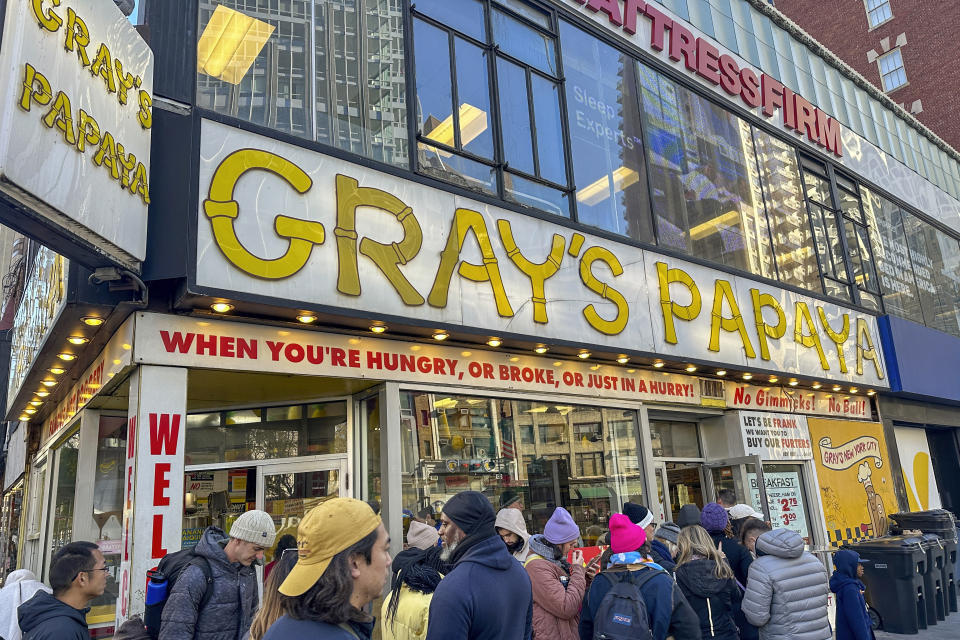
Americans don’t want to believe it, but the big economic story of 2022 and 2023 — high inflation — might be an afterthought by this time next year. The trends are certainly heading in the right direction.
Since 2021, Yahoo Finance has tracked price changes in 28 categories that represent most of the things people spend money on. There have been some zany moments: Used car inflation hit 45% in June 2021 as a shortage of microchips made new cars scarce and buyers flocked to used models. Also some painful moments: Grocery prices were rising by nearly 14% in the summer of 2022 as a variety of factors pushed production and transportation costs up, up, and away.
History books, however, will probably mark 2023 as the year the US economy won an improbable victory against inflation. The normal way to solve nasty bouts of inflation is to slam the brakes on the economy, through Federal Reserve interest rate hikes that make borrowing costlier and choke off economic activity. It’s normal for a recession to result as an unwanted side effect of the medicine. Rising rates coincided with recessions in the early 1970s, the mid ‘70s, and the early 1980s (twice).
What’s happening now, however, is that inflation is fading without the sting of recession, so far. The Fed has hiked rates at the most aggressive pace since the early 1980s. And inflation has dropped. The chart below shows what has happened to inflation in seven categories of staples most people rely on. We simplified the chart to show the inflation rate a year ago, and the most recent data point, which is November.
In all categories, the inflation rate has declined during the last 12 months, and in most cases it’s a sharp decline. In six categories — groceries, clothing, transportation, medical care, household energy, and gasoline — inflation is back to normal levels. The only outlier is housing, because rents are still elevated. Yet good news is coming there, too: Data for new lease signings shows that those rents are declining, which should result in savings for many renters as their leases expire and they sign new ones.

Drop Rick Newman a note, follow him on Twitter, or sign up for his newsletter.
But wait! All the price hikes of the last two years are still there, right? Which means prices went up and stayed up, regardless of what the current inflation rate is… ?
That’s mostly true, and it explains why consumers remain in a sour mood and President Biden is unpopular. Going back to 2019, before COVID hit, prices are up 19.4%, while earnings are up 20.3%. Call it even: During the last four years, Americans have not gotten ahead, on average. This has been pronounced during the last two years, with price hikes outpacing income growth for much of 2022 and 2023.
That flipped during the summer, with incomes once again beginning to rise by more than prices. So the typical consumer is slowly making up lost ground. If the current “soft landing” prognosis holds, and there’s no recession that drives up unemployment, inflation will recede as a worry.
That might already be happening. The University of Michigan’s consumer sentiment index jumped in the latest survey, erasing four consecutive months of declines. That’s what you’d expect to see as sticker shock in the grocery aisle wears off, gasoline dips below $3 per gallon, and even healthcare inflation remains subdued.
Biden, however, is in a race against time. Many voters blame him for inflation, even though COVID-related supply chain snafus and supply-demand mismatches probably had more to do with it. The Fed’s aggressive interest rate hikes have helped bring inflation down, but so has the normalization of global supply chains and spending patterns.
Biden got hammered as inflation rose, with his approval rating falling in direct proportion. But he’s enjoyed no rebound as inflation has fallen, with his approval rating now below 40%. Inflation gave voters a powerful reason to dislike Biden, and it’s not clear what it will take to win them back.
Rick Newman is a senior columnist for Yahoo Finance. Follow him on Twitter at @rickjnewman.
Click here for the latest economic news and indicators to help inform your investing decisions.
Read the latest financial and business news from Yahoo Finance






